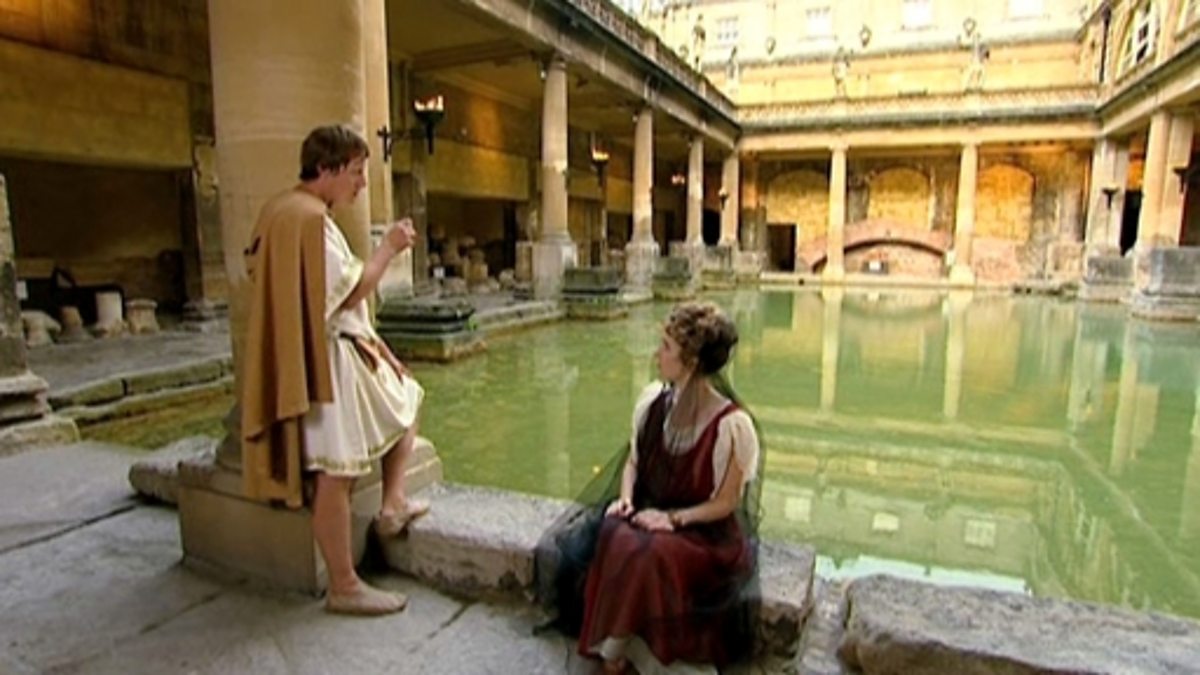FEBRUARY 10, 2023

By Harry Mottram. My wife Linda joked that the Christmas present she gave me – the OS Map of Roman Britain – was only of use to me if I owned a charity and could be transported back in time.
One of my planned expeditions this summer is to cycle from Bath to Seaton – my childhood town – and despite the passing of time the Fosse Way that links the two settlements is almost entirely still in place.
The Romans probably had a different name for it – possible Via Harritus as I like to fancy – but even without a chariot after nearly 2,000 years the road runs straight up Holloway and with the odd diversion around a hill or two is straight as an arrow to Ilchester and from thence to the sea in East Devon.
The Ordnance Survey Map of Roman Britain is essentially a two page reference book revealing where the Roman roads went, the names of the towns they visited and a wealth of information about religions, their armies, lifestyles and villas.
Printed in a dark green underlying the roads on the map are today’s roads and towns so it is quite feasible to travel from Bath to Hadrian’s Wall using mainly the routes trudged by many a weary centurion.

A recent archaeological dig created by the construction of the HS2 project has revealed an entirely unknown Roman market town in Northamptonshire suggesting there is much more to be discovered when Britain was not only part of a European Empire but enjoyed the benefits of a single currency and more importantly wine.
The map shows many roads which appear to fizzle out in places – except in one place – Bath.
In a book published last year by author Peter Davenport brings us up to date with all the archaeological discoveries of the last few years.
His book Roman Bath goes into great detail in all aspects of life in the city and also speculates on what it was like before and after the Latin speakers upped leather sandals and left in around 410 CE (410 AD in old money).

Finds of unmarked flint knives and cutting tools suggest the original Bathonians revered the steam cloaked hot springs by leaving gifts for the Gods who were the guardians of the waters.
Whether they took a hot bath during those snowy post Ice Age times we’ll never know but it is tempting to think they were rather cleaner than some later generations.
These hunter gatherers gave way eventually to Bronze Age and Iron Age farmers who seemingly left the springs well alone as little archaeological remains of the pre-Roman era has been found.
Davenport’s book goes into great detail on all aspects of Roman Bath and also gives illustrations and photographs of where parts of it still exist. There is considerable regret that modern developers beginning in the 18th and 19th centuries swept away what little remained of the time.
Certainly the Victorians shovelled away huge amounts of material which historians would loved to have sifted through today as they ‘transformed’ the Baths.
If only we could resurrect the original baths and temple complex and put a roof on the main bath so we could all don togas and take a dip in clear rather than greenish water.
In his forward Davenport writes: “When workmen, digging a sewer trench along Small Street in 1727, uncovered the gilded bronze head of Minerva it heralded the beginning of the long and exciting process leading to the discovery of the remarkable healing Roman shrine of Sulis Minerva, deep beneath modern Bath.”
Of course he was right – this was the start of the era that recreated Bath as an important spa resort – but it is also strange that from around the end of the fifth century to the 17th century the citizens failed to make the most of the waters.
The author speculates that for a time the baths were used after the Romans left. Later observers noted that the buildings had collapsed and had failed to be maintained.
Parts of the city walls were still used but much of the stone was re-used for new homes – but one part remained in use up until and past that find in 1727 – the Fosse way. Oh for a chariot.
The photo shows a still from Rom and Romola in the BBC’s time travel history programme


You must be logged in to post a comment.